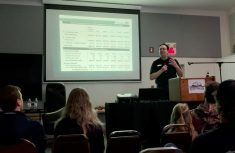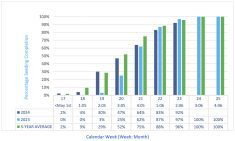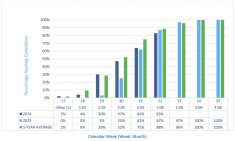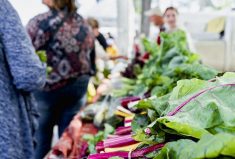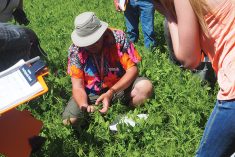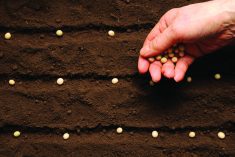David Kaminski, Manitoba Agriculture’s new field crop pathologist, is a familiar face to many of the province’s farmers.
That’s because Kaminski had the same position from 2001 until 2007 and worked as a manager with Manitoba Agriculture out of its Carman office until 2013.
In May of that year Kaminski started his arborist business. After doing that for almost six years he took up his old position as field crop agronomist April 15.
“It’s back to the future for me,” Kaminski said in an interview May 8.
Read Also

Mazergroup’s Bob Mazer dies
Mazergroup’s Bob Mazer, who helped grow his family’s company into a string of farm equipment dealerships and the main dealer for New Holland machinery in Saskatchewan and Manitoba, died July 6 from cancer.
After he left in 2013 his post was filled first by Vikram Bisht, who became and remains Manitoba Agriculture’s potato and horticultural pathologist, and then Holly Derksen. Last fall Derksen joined Arysta LifeScience as its technical support specialist for Manitoba.
Manitoba Agriculture’s field crop pathologist plays an important role in identifying crop diseases and educating farmers on how to prevent and control them.
Kaminski, who has a master’s degree in pest management from Simon Fraser University, started off his career in 1989 running a diagnostic laboratory for Alberta Agriculture until 1991.
Then he was a provincial plant disease specialist in Saskatchewan for five years, followed by five years with Western Co-operative Fertilizers Ltd. (WESTCO) before moving to Manitoba Agriculture in 2001.
Kaminski said he’s happy to be back in his former position but even though he was out of agriculture just six years, things have changed, he said.
“It’s more technical, more extensive,” he said. “Farms have continued to grow in size. It’s a fast-paced industry and to be out of it for six years there’s a little bit of a learning curve to get up to full speed. But I’m doing my best.”
With the rise of social media, information travels much faster than it used to, he added.
While it’s too early to forecast what crop diseases Manitoba farmers could face this growing season, Kaminski noted that three factors come into play. One is a disease (pathogen) has to be present. There has to be a host and the disease requires the right environment to grow.
So far it has been a slow, gradual spring. It reminds Kaminski of 2004 when snow fell May 9 and 10. That year there were two crops — one seeded before the snow and one after.
“That proved to be quite a challenge,” he said. “Crops were at quite different stages. Generally it’s the earlier ones (crops) that do well if they can get up and off to a good start. But if you have crops that sit in the ground for a long time and do not emerge that’s a problem.”








